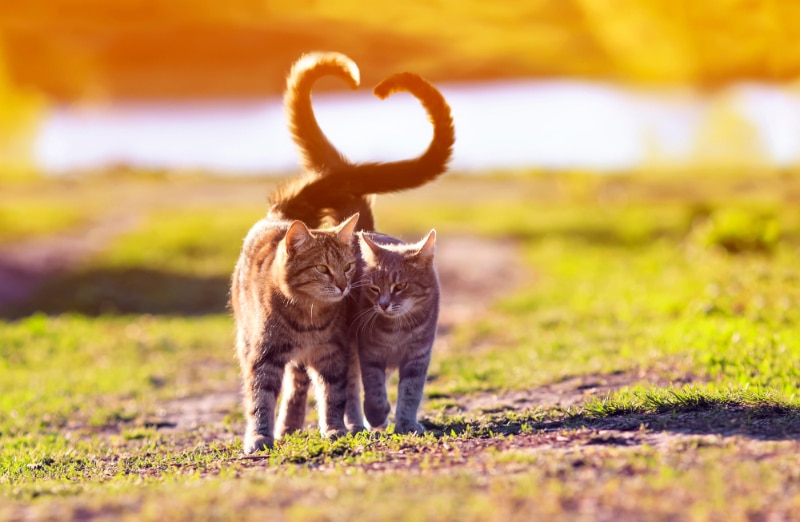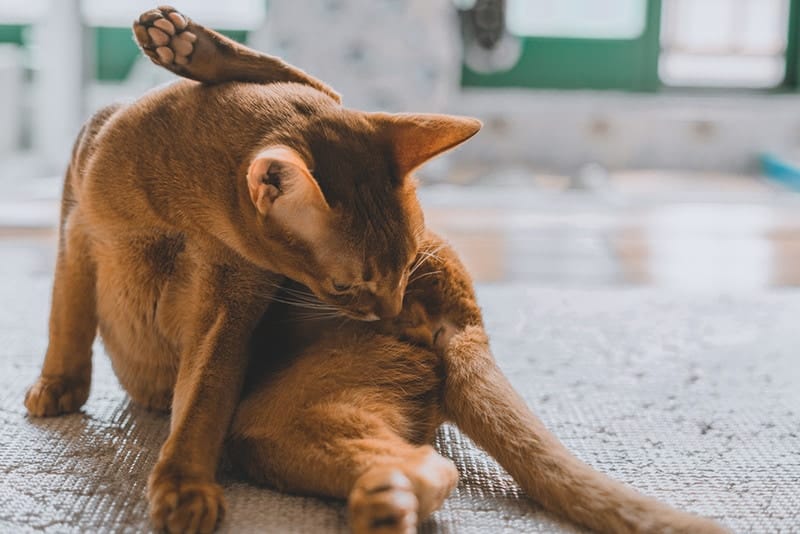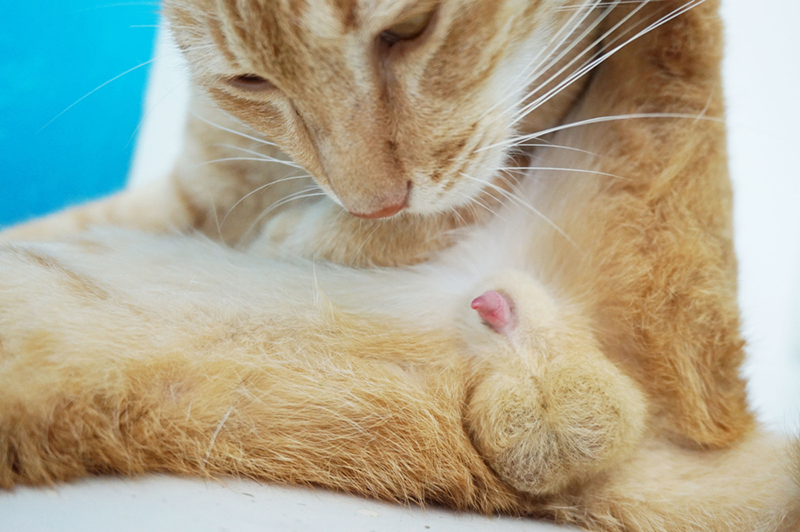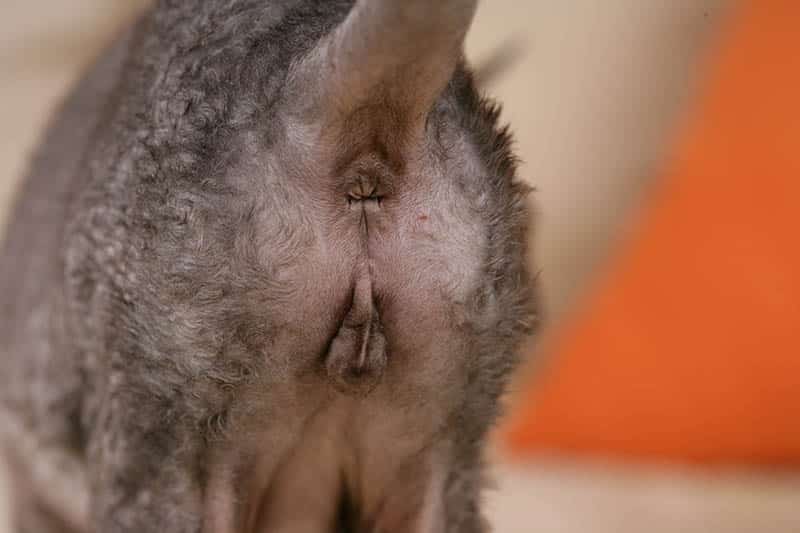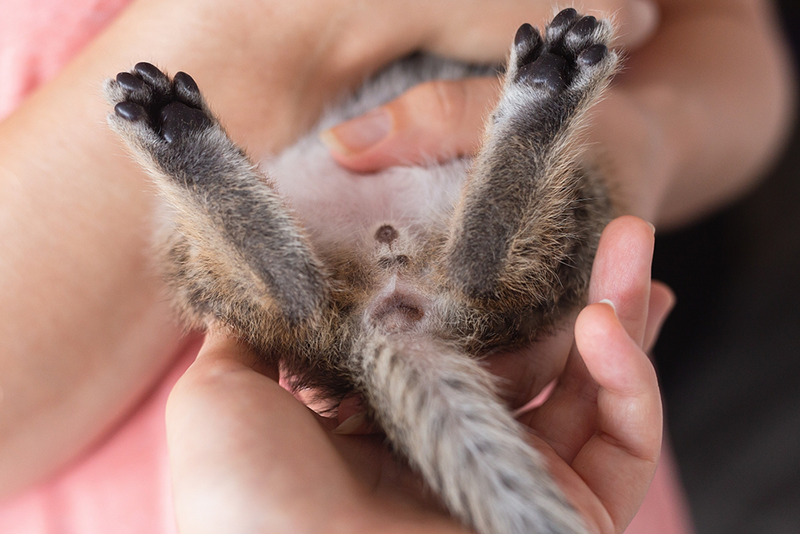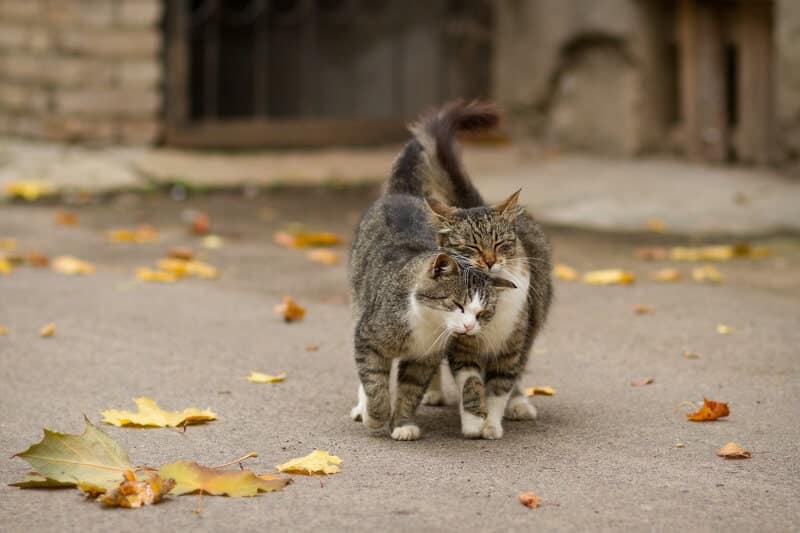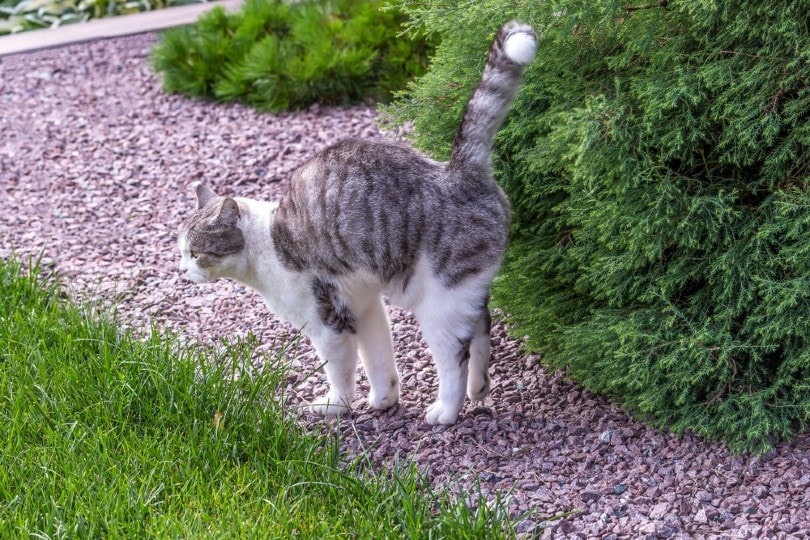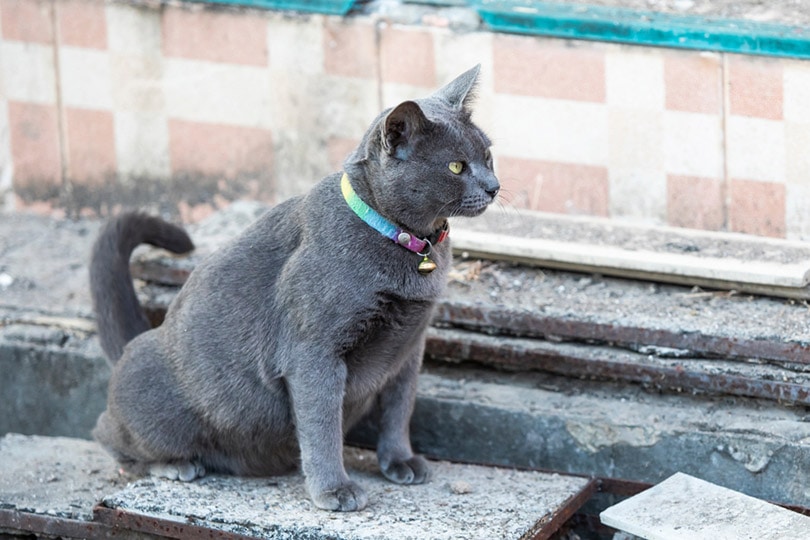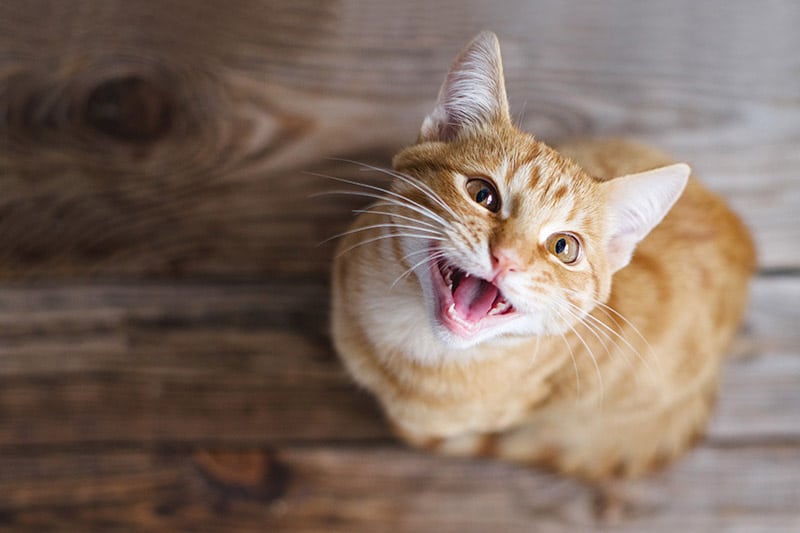The knowledge is current and up-to-date in accordance with the most recent veterinarian research.
Learn more »
Cat breeders and veterinarians aren’t the one ones who have to know concerning the feline reproductive system and mating behaviors. While the common cat owner doesn’t must be an authority, having general knowledge can show you how to track their health and deal with your cat higher. Knowing what’s normal and what’s abnormal is important in making logic calls in your cat’s well-being and getting them skilled help when needed.
There’s so much to learn about cat reproduction and mating. So, we’ll go over the fundamental information that’s helpful for cat owners and answer common questions that folks have about them.
When Do Cats Reach Sexual Maturity?
Cats reach sexual maturity at a comparatively early age. They typically change into sexually mature and are capable of reproduce before they change into a yr old. Most cats undergo puberty at around 6 months old, nevertheless it’s possible for some female cats to undergo their first heat cycle as soon as 4 months old.
Image Credit: Bachkova Natalia, Shutterstock
Anatomy of Cat Reproductive System
Female and male cats have distinctive reproductive systems that function to supply eggs and sperm. While their reproductive systems share some similarities with human reproductive systems, you’ll notice just a few significant differences within the stages of their reproductive cycles.
Male Cat Reproductive System
Listed here are the most important parts of a male cat’s reproductive system:
- Testes
- Epididymis
- Bulbourethral Glands
- Prostate Gland
- Ductus Deferens
- Penis
Testes
The testes, or testicles, are situated within the scrotum and produce sperm. Testosterone is the hormone that influences sperm production, and it’s also produced within the testes.
Epididymis
The epididymis connects the testes to the ductus deferens. It’s a tube-like structure that plays a key role in sperm development, storage, and transportation. Sperm typically takes an additional 10 to 12 days to mature within the epididymis after being released from the testes.
Image Credit: Wirestock Creators, Shutterstock
Bulbourethral Glands
The bulbourethral glands, more commonly often called Cowper’s gland, are a pair of glands that produce mucus that helps sperm travel. They’re accessory glands which can be positioned near the prostate gland.
Prostate Gland
Its most important function is to supply the most important fluid that makes up a seminal fluid. This fluid is mixed with fluids from other glands and sperm from the testicles to create semen.
Ductus Deferens
The ductus deferens, or vas deferens, is a continuation of the epididymis. It transports seminal fluid from the epididymis to the urethra.
Penis
A male cat’s penis has papillae protruding from its surface. The papillae are little spines that function to stimulate ovulation in female cats. They disappear after a cat gets neutered.
Image Credit: nokchu, Shutterstock
Female Cat Reproductive System
Listed here are the most important parts of a female cat’s reproductive system:
- Ovaries
- Fallopian Tubes
- Uterus
- Cervix
- Vagina and Vulva
- Mammary Glands
Image Credit: absolutimages, Shutterstock
Ovaries
The ovaries’ most important function is to supply eggs and feminine sexual hormones, akin to estrogen and progesterone. Estrogen aids in the event of eggs, while progesterone helps with getting the uterus ready for pregnancy.
Fallopian Tubes
The fallopian tubes, or oviducts, connect the ovaries and the uterus. It’s a passageway that transports fertilized eggs to the uterus.
Uterus
The uterus houses fertilized eggs and is the space where fetuses develop. It has three layers that function to guard the fetuses and help implant the placenta. They’re flexible and can expand because the fetuses grow, and additionally they contract when it’s time for the cat to offer birth.
Image Credit: Tosha Bu, Shutterstock
Cervix
The cervix connects the uterus to the vagina. It’s designed to forestall infections by staying closed. Nevertheless, it can calm down when a cat is prepared to offer birth.
Vagina and Vulva
The vagina is the passageway that sperm travel through, and it also provides secure passage for the kittens during birth. The vulva protects the vaginal opening.
Mammary Glands
Female cats have 4 pairs of mammary glands. They change into lively with pregnancy and work to supply milk for nursing kittens.
Feline Mating Season
Cats are polyestrous animals, which implies that they undergo multiple estrus cycles per yr. The term “estrus” refers to a period of sexual receptivity and can be also known as a heat cycle or a mating cycle. On average, female cats can undergo two to 3 heat cycles in a single mating season and birth two to 3 litters of kittens per yr.
Image Credit: Oleg Shishkunov, Shutterstock
Feline Breeding Behavior
Within the northern hemisphere, it’s common for mating season to start out in February and last through October. Plainly the increased length of daylight triggers estrous activity in cats. Female cats are able to mate once they’re within the estrus stage of their heat cycle.
If a female cat in heat is near a male cat, the male cat will normally first take time to look at her behavior to find out if she’s able to mate. If he sees her exhibiting mating behavior, he’ll begin to approach her. The feminine cat will then get into the position of lordosis. She is going to lie down along with her hindlimbs elevated and her tail up.
The male cat will then mount the feminine cat and can bite her neck to maintain her in place. Once ejaculation occurs, he’ll release her and move away from her. This will last anywhere between 1 to 4 minutes.The feminine cat will normally exhibit a set of certain behaviors immediately afterward. She may roll around or rub herself on different objects. She may also lick the vulvar area. The male cat will typically stay nearby and observe her. Once she has settled down, the cats normally reengage and mate again, and cats can mate over and over per day.
 Male Cat Behavior During Mating Season
Male Cat Behavior During Mating Season
Male cats have a longtime territory that they possess. Once the mating season begins and feminine cats in his territory are showing signs of being in heat, he normally starts to behave in another way.
Male cat mating behavior consists of several activities. One of the crucial notable behavioral changes is the male cat mating call. This mating call is basically loud and infrequently seems like the cat is yowling in pain.
Male cats may also start to extend urine marking and spraying to draw a mate. They often change into restless and more lively. It’s essential to maintain a detailed eye on pet cats during mating season because they’re way more prone to roam and escape from their homes to go looking for a mate.
One other thing it’s possible you’ll notice from pet male cats is increased aggressiveness. They could pick fights with other cats or pets in the home as a method of protecting their territory.
Image Credit: Helen Liam, Shutterstock
Female Cat Behavior During Mating Season
Female cats can share certain behaviors which can be just like male cats once they’re in heat. Like male cats, they will change into more vocal to draw a mate, change into more lively, and are prone to roam. Some female cats may urinate more steadily, and it’s believed that they do that to let male cats know that they’re able to mate.
Female cats which can be in heat often start to boost their hindquarters within the air and swish their tails backward and forward. Some female cats may act more affectionate and attention-seeking. They may ask for more pets and can rub themselves against you. They may also have bursts of aggression, and it’s common for them to go backwards and forwards between being affectionate and irritated.
It’s essential to notice that female cats undergo menstruation cycles, nevertheless it’s not common for them to bleed. So, in case you notice any spotting or bleeding, it’s best to contact your veterinarian instantly. While light spotting may not pose an issue, bleeding can still indicate an underlying medical issue, like a urinary tract infection.
Image Credit: SOMRERK-WITTHAYANANT, Shutterstock
 Is It Possible to Calm Down Cats While They’re in Heat?
Is It Possible to Calm Down Cats While They’re in Heat?
Cat behavior during their mating season can test the patience of many cat owners. Your cat is prone to change into louder and more demanding. Some cats also change into more aggressive. You’ll must keep a more in-depth eye in your cat because they’ll attempt to escape and go outside to seek out a mate.
There are some things you’ll be able to do to calm down a cat in heat. First, it’s essential to maintain male cats apart to forestall aggressive behaviors and fights. Some cats will appreciate having a heating pad or hot water bottle. Ensure to play together with your cat to assist them expend a few of their energy. Some cats can also calm down in case you give them catnip.
It’s essential to keep in mind that even in case you do all this stuff, your cat may not calm down through the mating season. At the tip of the day, these behaviors are normal, and your cat can’t help but engage in them. It’s essential not to point out frustration, anger, or annoyance toward your cat during mating season.
Spaying or neutering your cat might help reduce these behaviors, as cats now not feel the necessity to mate. So, in case you’re not planning to breed your cats, it’s best to have them spayed or neutered. Female Heat Cycle and Pregnancy
A female cat’s heat cycle from mating to birthing kittens consists of six stages:
- Proestrus
- Estrus
- Interestrus
- Diestrus
- Anestrus
- Gestation
The proestrus phase lasts between 1 to 2 days and is the period that prepares cats to enter the estrus stage. The estrus stage is more commonly often called when cats go into heat. You’ll notice behavioral changes in cats during this stage, they usually’ll be receptive to mating. The estrus stage can last anywhere between 2 to 19 days.
If the feminine cat doesn’t mate, she’ll go into the interestrus stage, which may last between 13 to 18 days. After the tip of this stage, she’ll undergo one other estrus stage. If a female cat does mate through the estrus stage, she’ll enter the diestrus stage. This stage occurs when the feminine cat has ovulated.
Image Credit: savitskaya iryna, Shutterstock
The anestrus stage simply refers back to the timespan of when cats will not be going through a heat cycle. If a cat does enter the diestrus stage, she’s going to then enter the gestation period. Gestation normally lasts between 63 to 65 days until the cat gives birth to her litter. Female cats could be able to mate again 8 weeks after giving birth to kittens.
Conclusion
It’s generally really helpful for pet cats to be neutered or spayed due to challenges that include cat mating seasons. These procedures also help reduce the stray cat population and overcrowding in animal shelters.
If you happen to decide to look after cats which have not been spayed or neutered, it’s essential to grasp the feline reproductive system and mating behaviors so that you simply’re prepared to act if something is incorrect. Because a cat’s reproductive system plays a big role of their health and well-being, make sure that to contact your veterinarian in case you notice anything strange or abnormal.
Featured Image Credit: Magui RF, Shutterstock



